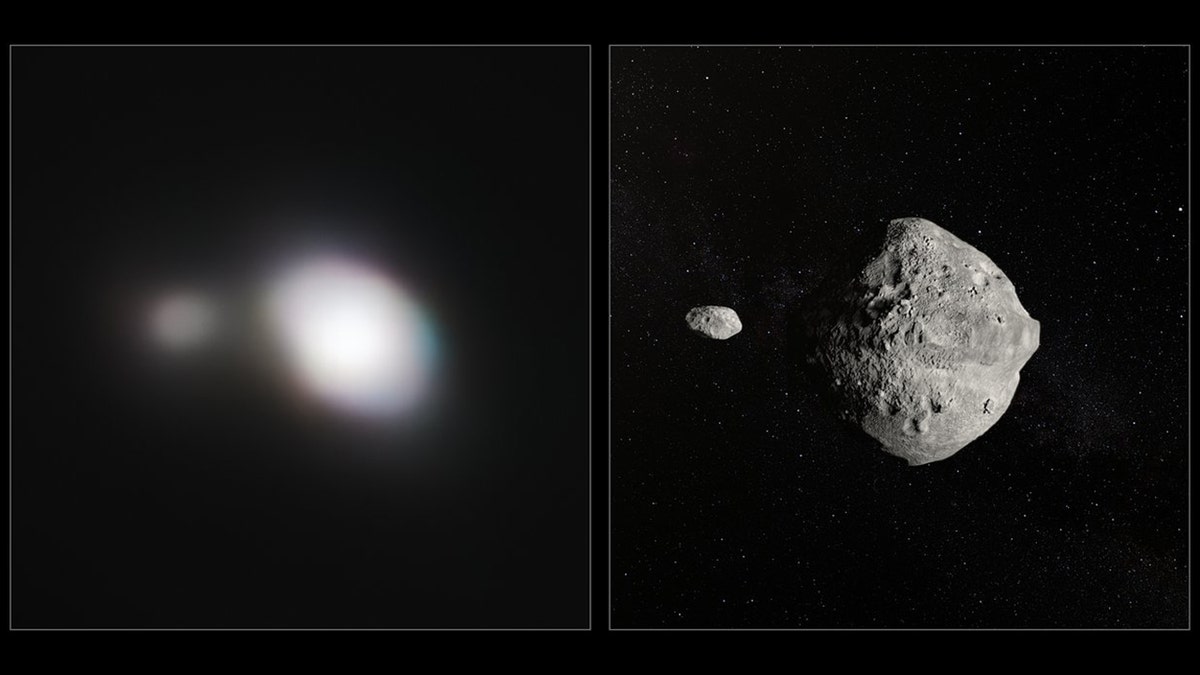Fox News Flash top headlines for June 3
Fox News Flash top headlines for June 3 are here. Check out what's clicking on Foxnews.com
A unique “double asteroid” was photographed by a powerful telescope as it whizzed by Earth last month at over 43,000 mph.
The asteroid, classified as 1999 KW4, is made up of two components — a larger body orbited by a smaller one separated by about 1.6 miles. It got as close as 3.2 million miles to Earth on May 25 — about 14 times the distance from Earth to the Moon, the European Southern Observatory (ESO) said in a news release Monday.
HOW LIFE ON EARTH COULD COME BACK FROM STERILIZING ASTEROID IMPACT
The double asteroid, which has an orbit well known to scientists, is not an impact threat to Earth, ESO officials said. Scientists with the ESO and the International Asteroid Warning Network worked together to predict the flyby and make appropriate preparations for observing the object.

The left-hand image shows SPHERE observations of Asteroid 1999 KW4. The angular resolution in this image is equivalent to picking out a single building in New York — from Paris. An artist's impression of the asteroid pair is shown on the right. (ESO)
The organization said it used its Very Large Telescope (VLT) to spot the passing asteroid. The VLT was able to capture images sharp enough to distinguish the two parts of the asteroid thanks to its Spectro-Polarimetric High-contrast Exoplanet Research (SPHERE) instrument. SPHERE’s main purpose is to observe exoplanets — planets located outside our Solar System.
ESO astronomer Olivier Hainaut said data obtained will help in evaluating effective strategies to deflect potential asteroids on a collision course with Earth.
CLICK HERE TO GET THE FOX NEWS APP
“In the worst possible case, this knowledge is also essential to predict how an asteroid could interact with the atmosphere and Earth’s surface, allowing us to mitigate damage in the event of a collision,” he said.
The ESO noted that 1999 KW4 is similar to a binary asteroid called Didymos and its smaller orbiting companion, Didymoon, which could become a threat to Earth in the distant future.

